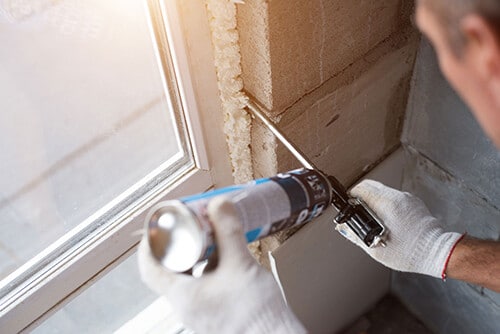The Importance of Air Sealing Your Home

Air sealing is one of the most cost-effective ways to improve the energy efficiency, durability, and comfort of your home. It involves finding and sealing all the cracks, gaps, and penetrations in your home’s envelope where air can leak in or out. Properly air sealing your home can help reduce your energy bills, improve indoor air quality, and protect your home from moisture damage and pests. In this blog post, we’ll discuss the benefits of air sealing, where to look for common air leaks, tips for air sealing, and the tools you need to get the job done right.
Why Air Seal Your Home?
There are several compelling reasons why you should take the time to air seal your home:
Reduce Energy Bills
Air leaks can account for up to 30% of heating and cooling costs in a typical home. By sealing these leaks, you can reduce the amount of conditioned air escaping from your home. This allows your HVAC system to run less often, saving you money on utility bills.
Improve Comfort
Air leaks can create drafts and temperature inconsistencies indoors. Properly sealing your home helps stop these drafts and evens out temperatures for improved comfort.
Enhance Durability
Unsealed cracks and gaps allow moist, humid air to enter your home’s walls and attic. This moisture can encourage mold growth and damage insulation, framing, and other structural components. Air sealing protects your most valuable investment – your home.
Improve Indoor Air Quality
Sealing air leaks stops outdoor allergens like pollen and pollutants from entering your living spaces. It also prevents moisture and gases like radon from accumulating indoors. The result is better indoor air quality.
Deter Pests
Rodents, insects, and other pests use small openings to sneak into your home. Closing these access points through air sealing discourages pest infestations.
Where to Look for Air Leaks
Air leaks can be sneaky, so you have to carefully inspect inside and outside your home. Here are some of the most common places air escapes:
- Windows and doors
- Electrical and plumbing penetrations
- Attic hatches
- Fireplace dampers
- HVAC vents and fixtures
- Baseboards and moldings
- Electrical outlets and switches
- Foundation and sill plates
- Crawl spaces and attic bypasses
Focus your air sealing efforts in these problem areas for maximum benefit.
Tips for Effective Air Sealing
Follow these tips to ensure you seal air leaks completely and safely:
- Use the right materials – Use durable, long-lasting caulks, sprays, tapes, and weatherstripping products that are designed specifically for air sealing.
- Prepare surfaces – Clean and dry all surfaces before applying sealants for better adhesion. Remove any loose caulk or insulation.
- Follow manufacturer’s instructions – Read directions and take proper safety precautions when working with air sealing products.
- Work from indoor side – Sealing from inside helps stop air leaks while preventing moisture damage on outer surfaces.
- Seal penetrations – Use caulk, expandable foam, or weather stripping to seal all electrical, plumbing, and other penetrations.
- Don’t block airflow – When sealing HVAC components, don’t obstruct proper airflow to appliances.
- Check for completeness – Inspect seals and test problem areas, like with a smoke pencil, to ensure air leaks are fully sealed.
Recommended Air Sealing Tools and Materials
With the right tools and supplies, air sealing will be much easier:
Caulk gun
Apply caulk around windows, doors, and other gaps. Consider buying an electric caulk gun for large projects.
Spray foam sealant
Foam offers an easy way to fill and seal irregular gaps and penetrations. Use minimal expanding foam for easier clean up.
Weatherstripping
Adhesive-backed foam and rubber weatherstripping tapes can seal leaky windows, doors, attic hatches, etc.
Expandable foam backer rod
Backer rod helps fill deep gaps before caulking and improves seal performance.
High-quality caulk
Look for paintable acrylic or silicone caulks rated for 20+ year durability.
Plastic sheeting and tape
Cover windows, attic openings, etc. during sealing work to contain dust and debris.
Conclusion
Air sealing your home is one of the smartest investments you can make. The small amount of time and money required yields significant long-term payoffs in the form of energy savings, better comfort and air quality, and reduced home maintenance. Focus your efforts on finding the main air entry points throughout your home and sealing them up tight. With some diligence and the right attic insulation, you can stop costly air leaks for good. Your wallet and home will thank you.

